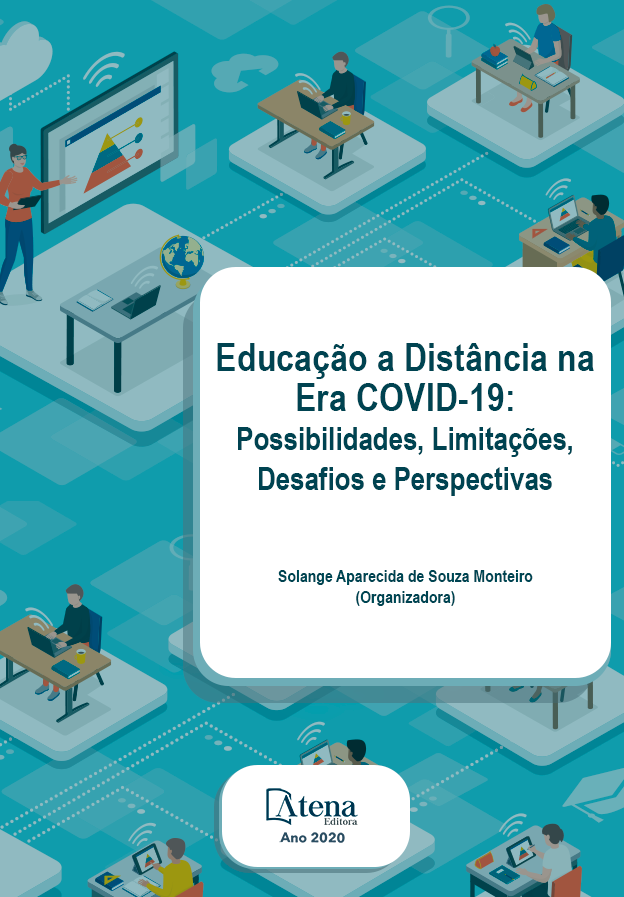
O ENSINO DE ARTES NA PANDEMIA DO CORONAVÍRUS E AS PERSPECTIVAS FUTURAS
Este artigo buscou verificar, através de uma revisão de literatura, quais são as principais implicações e desafios para o ensino de arte na pandemia e também como será ensinar após a COVID-19 ser controlada. Foi realizado um estudo exploratório, de natureza qualitativa, com análise de artigos científicos publicados em periódicos nos idiomas português e inglês. Os resultados demonstraram que o mundo foi pego de surpresa com um vírus mortal e assustador, capaz de fechar escolas, grandes corporações e até fronteiras de países, no intuito claro de evitar maior proliferação, enquanto não se sabe de uma cura. O ensino de arte e demais disciplinas foi amplamente impactado. Disciplinas que demandam a realização de atividades práticas e orientação constante tiveram que ser convertidas em aulas online sem a possibilidade de contato humano e com forte impacto no esclarecimento de dúvidas e verificação adequada de aprendizagem. Quando se considera as condições desiguais de diversos estudantes ao redor do mundo em termos de acesso a internet e recursos materiais necessários a situação torna-se ainda mais complexa. O futuro nos reserva o retorno as atividades presenciais, mas o ensino online não deve ser deixado de lado pelas instituições, que devem estabelecer cada vez mais um modelo híbrido de ensino. Cabe ao profissional de arte buscar estabelecer a relevância e necessidade das atividades práticas, mas não ficar alienado ao que está ao seu redor, sendo necessário que busque se atualizar e verificar práticas que podem ser adotadas utilizando os recursos tecnológicos disponíveis. O novo normal não deve ser fácil, muitas dúvidas ficarão no ar por bastante tempo, mas a arte estará pronta para retratar tudo que vier a acontecer.
O ENSINO DE ARTES NA PANDEMIA DO CORONAVÍRUS E AS PERSPECTIVAS FUTURAS
-
DOI: 10.22533/at.ed.05820011211
-
Palavras-chave: Arte; coronavírus; ensino; novo normal; desafios.
-
Keywords: Art; coronavirus; teaching; new normal; challenges.
-
Abstract:
This article sought to verify, through a literature review, what are the main implications and challenges for teaching art in the pandemic and also what it will be like to teach after COVID-19 is controlled. An exploratory study of a qualitative nature was carried out, with analysis of scientific articles published in journals in Portuguese and English. The results showed that the world was taken by surprise with a deadly and frightening virus, capable of closing schools, large corporations and even country borders, in the clear intention of preventing further proliferation, while a cure is not known. The teaching of art and other disciplines was largely impacted. Courses that demand the realization of practical activities and constant guidance had to be converted into online classes without the possibility of human contact and with a strong impact in clarifying doubts and proper learning verification. When considering the unequal conditions of different students around the world in terms of access to the internet and necessary material resources, the situation becomes even more complex. The future holds for us the return to face-to-face activities, but online education must not be left aside by institutions, which must increasingly establish a hybrid teaching model. It is up to the art professional to seek to establish the relevance and need for practical activities, but not to be alienated from what is around him, and it is necessary to seek to update himself and verify practices that can be adopted using the available technological resources. The new normal should not be easy, many doubts will remain in the air for a long time, but the art will be ready to portray everything that happens.
-
Número de páginas: 14
- Lucio Marques Peçanha
- Taiele Pinheiro da Silva de Miranda Peçanha


